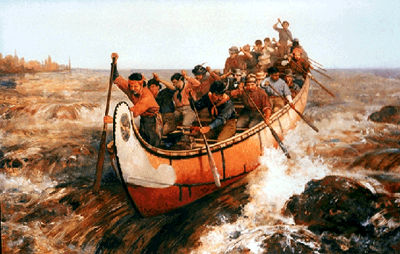Édith Butler (1942–)
“Tall and regal, dressed all in white, Edith Butler sparkles on stage,” Le Droit (Ottawa, 12 April 1979). Hailed as the “mother of Acadian music,” Edith’s captivating presence allows her to share Acadian folksongs and culture with the world.
Born in the remote village of Paquetville, NB in 1942, singer-songwriter Edith Butler was raised by a family of musicians. She performed at cafés while studying at l’Université de Moncton where she earned a Bachelor of Arts. After a brief period of teaching school (1964-1966), Edith acquired a Master’s degree in ethnographic research at Laval University, QC. She remained active in the musical community during these years, including performances at festivals, on Halifax TV, in boîtes à chansons[1], and the leading role in the film Les Acadiens de la dispersion (National Film Board of Canada, 1964).
As Edith’s musical career developed, she began touring internationally. Edith started composing her own songs in the early 70s and collaborating with her agent Lise Aubut. These compositions reflect New Brunswick’s Acadian and Mi’kmaq culture and history. Edith and Lise established les Éditions de l’Arcadie and l’Acalf[2] in 1975. They also formed the record company SPPS[3] with Angèle Arsenault, and Jacqueline Lemay in 1974.
In the late 1970s and early 1980s, Edith continued to perform across Canada and Europe. She won the Prix international de la chanson (1981) and the Grand prix du disque de l’Académie Charles-Cros (1983) for her album De Paquetville à Paris. Edith won two Félix trophies and her albums … et le party continue! (1986) and Party pour danser (1987) were certified gold.
Edith’s effortless beauty and full-throated vocals combined with “rollicking footstomping” made her an ideal recipient for numerous awards: the Ordre du Mérite de la culture française (1971) and the Officer of the Order of Canada (1975) are two of many. She was inducted into the Canadian Songwriters Hall of Fame for her song “Paquetville,” in 2007.
Although she is well-known for her colourful, infectious energy in Acadian folk song, Edith holds her audience through the most soft, sobering laments as well. A variety of instruments appear at her shows, including the banjo, dulcimer, guitar, harmonica, drum, and violin. Edith’s blend of traditional folk songs with new compositions preserves while expanding Acadian art. Despite the unjust deportation and hardships of the Acadians, they endured as America’s first francophone culture through a fierce oral tradition. Edith Butler is an undisputed pioneer and advocate of Acadian heritage.
[1] Intimate performance spaces for young musicians. Benoît L’Herbier, “Boîtes à chansons,” The Canadian Encyclopedia, February 7, 2006, https://www.thecanadianencyclopedia.ca/en/article/boites-a-chansons-emc (accessed January 20, 2025).
[2] Acronym for Aide à la création artistique et littéraire de la femme. Sarah Church et al. “Edith Butler,” The Canadian Encyclopedia, August 10, 2010, https://www.thecanadianencyclopedia.ca/en/article/edith-butler-emc (accessed January 20, 2025).
- Church, Sarah , and Christian Rioux, , and Suzanne Thomas. “Edith Butler.” The Canadian Encyclopedia. Historica Canada. Article published August 10, 2010; Last Edited August 11, 2014.
- Fierté Montréal. “Edith Butler.” Accessed January 20, 2025. https://fiertemontreal.com/en/artists/edith-butler-2023
- Government of Canada. “Canada, Women and Gender Equality.” Accessed January 20, 2025. https://www.canada.ca/en/women-gender-equality/commemorations-celebrations/women-impact/arts/edith-butler.html
- L’Herbier, Benoît. “Boîtes à chansons.” The Canadian Encyclopedia. Historica Canada. Article published February 07, 2006; Last Edited December 15, 2013.
Related Contents:
- “J’entends le moulin”
- “Edith Butler – Daughter of the Wind and Acadie”
- “Paquetville”
- “J’ai vu en Acadie”
- “Au chant de l’alouette”



